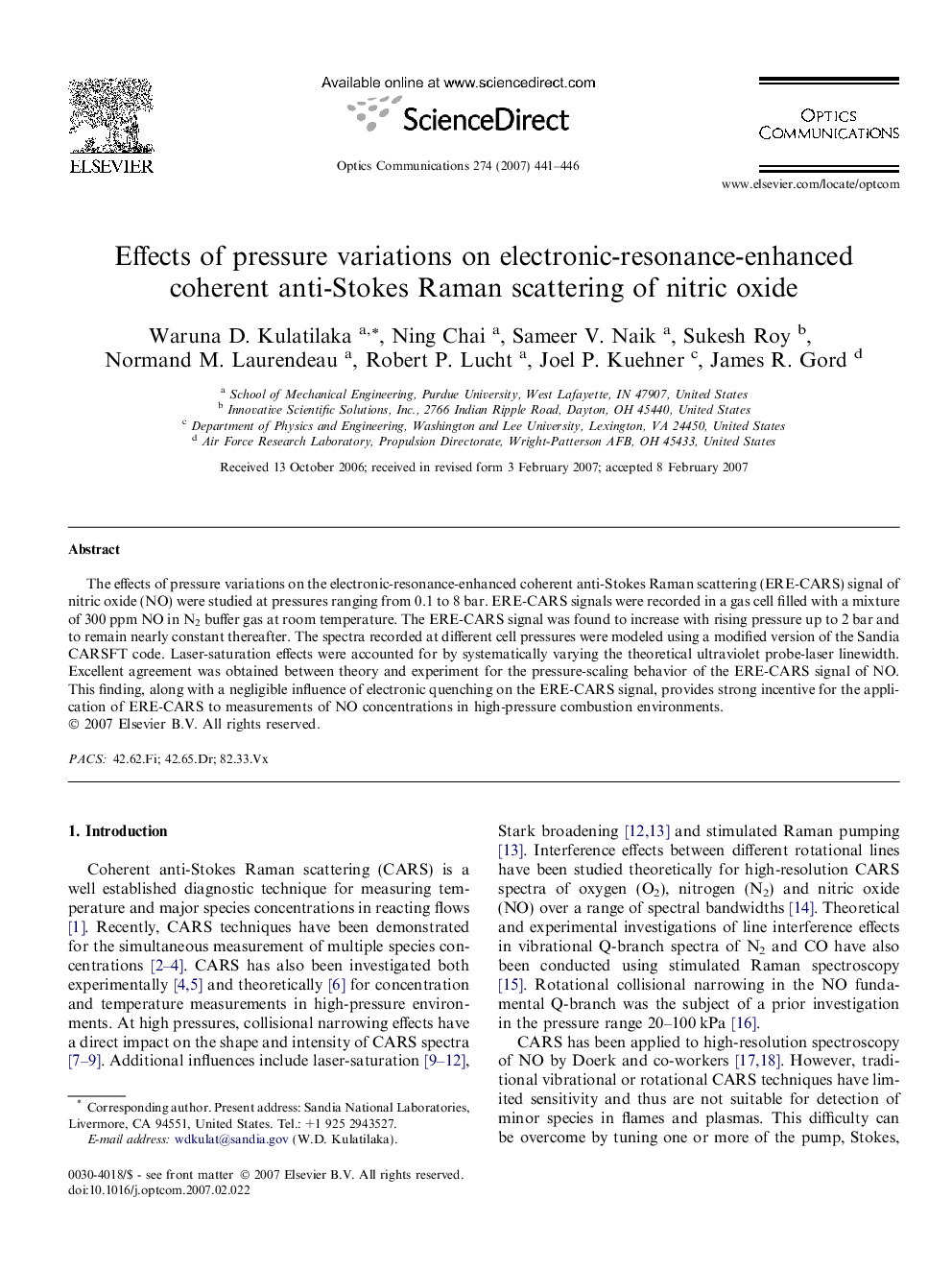| Article ID | Journal | Published Year | Pages | File Type |
|---|---|---|---|---|
| 1542129 | Optics Communications | 2007 | 6 Pages |
Abstract
The effects of pressure variations on the electronic-resonance-enhanced coherent anti-Stokes Raman scattering (ERE-CARS) signal of nitric oxide (NO) were studied at pressures ranging from 0.1 to 8Â bar. ERE-CARS signals were recorded in a gas cell filled with a mixture of 300Â ppm NO in N2 buffer gas at room temperature. The ERE-CARS signal was found to increase with rising pressure up to 2Â bar and to remain nearly constant thereafter. The spectra recorded at different cell pressures were modeled using a modified version of the Sandia CARSFT code. Laser-saturation effects were accounted for by systematically varying the theoretical ultraviolet probe-laser linewidth. Excellent agreement was obtained between theory and experiment for the pressure-scaling behavior of the ERE-CARS signal of NO. This finding, along with a negligible influence of electronic quenching on the ERE-CARS signal, provides strong incentive for the application of ERE-CARS to measurements of NO concentrations in high-pressure combustion environments.
Related Topics
Physical Sciences and Engineering
Materials Science
Electronic, Optical and Magnetic Materials
Authors
Waruna D. Kulatilaka, Ning Chai, Sameer V. Naik, Sukesh Roy, Normand M. Laurendeau, Robert P. Lucht, Joel P. Kuehner, James R. Gord,
